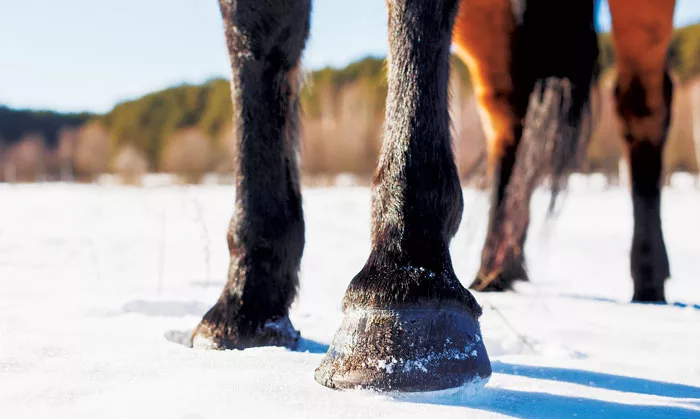American Farriers Journal
American Farriers Journal is the “hands-on” magazine for professional farriers, equine veterinarians and horse care product and service buyers.

The wet-dry cycles during winter result in dull, brittle and cracked hooves. “Bathing in the summer and fall and the use of detergents break down the oils in the hoof and compounds the problem,” Dr. Scott Morrison warns. WoodHunt
Each season brings its own set of challenges when it comes to hoof care, which can look much different in winter than it does in the summer
Among the many reasons hoof care differs drastically in the winter is that many horse owners pull shoes off to reduce traction concerns and improve hoof quality.
Whether the horse is year-round barefoot or just for the winter, there are several things that can be done to help manage barefoot horses in the winter and ensure their hoof quality remains healthy throughout the colder months.
Going barefoot in the winter is a great option for horses normally shod because it significantly improves the strength and integrity of the hoof and heels.
It’s also a great way to allow nail holes to grow out, improve traction and make it easier for horses to hold shoes again when spring rolls back around and they return to work and competition.
“Letting the hoof go bare is ideal, as that is what nature intended,” says…